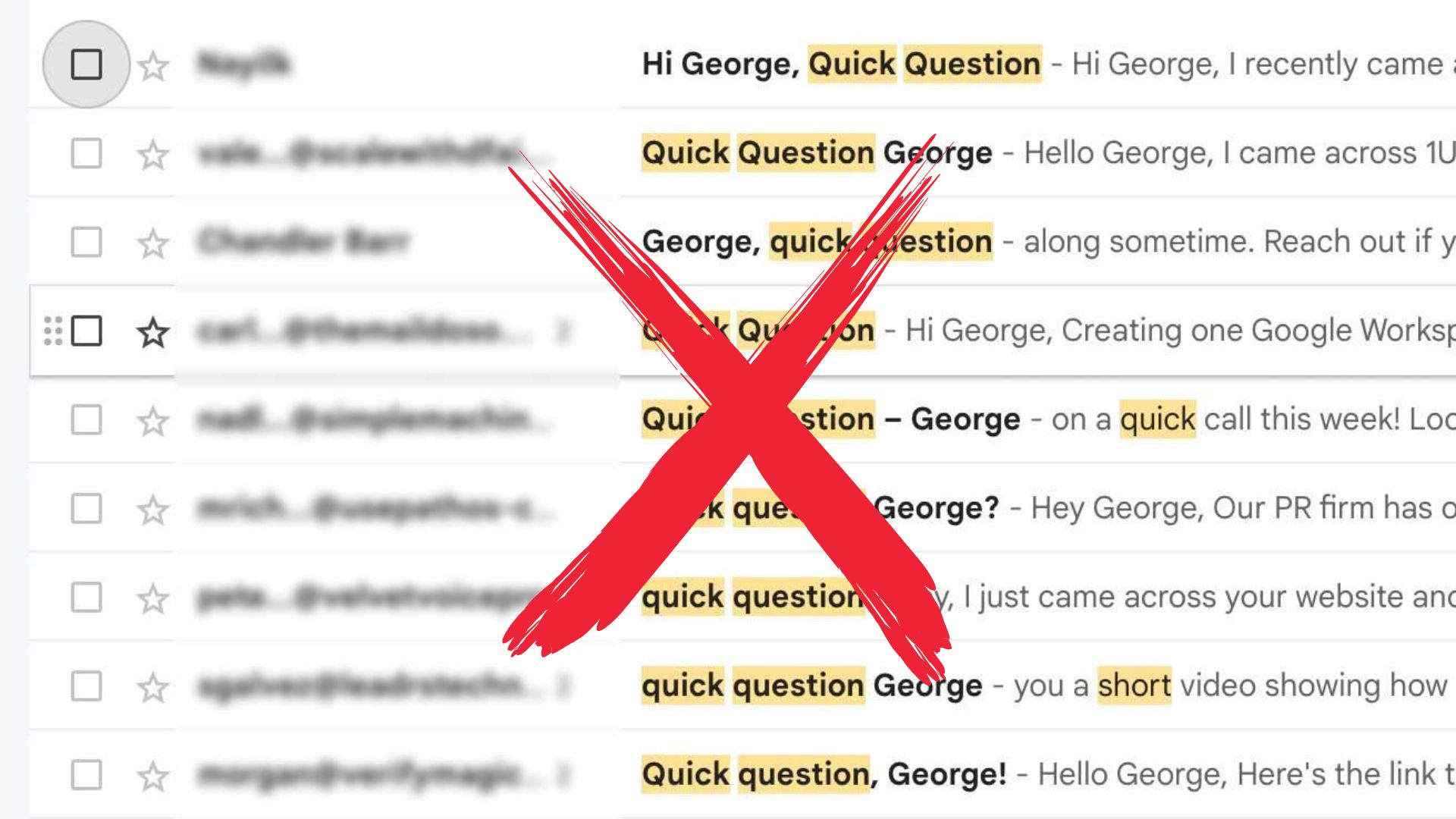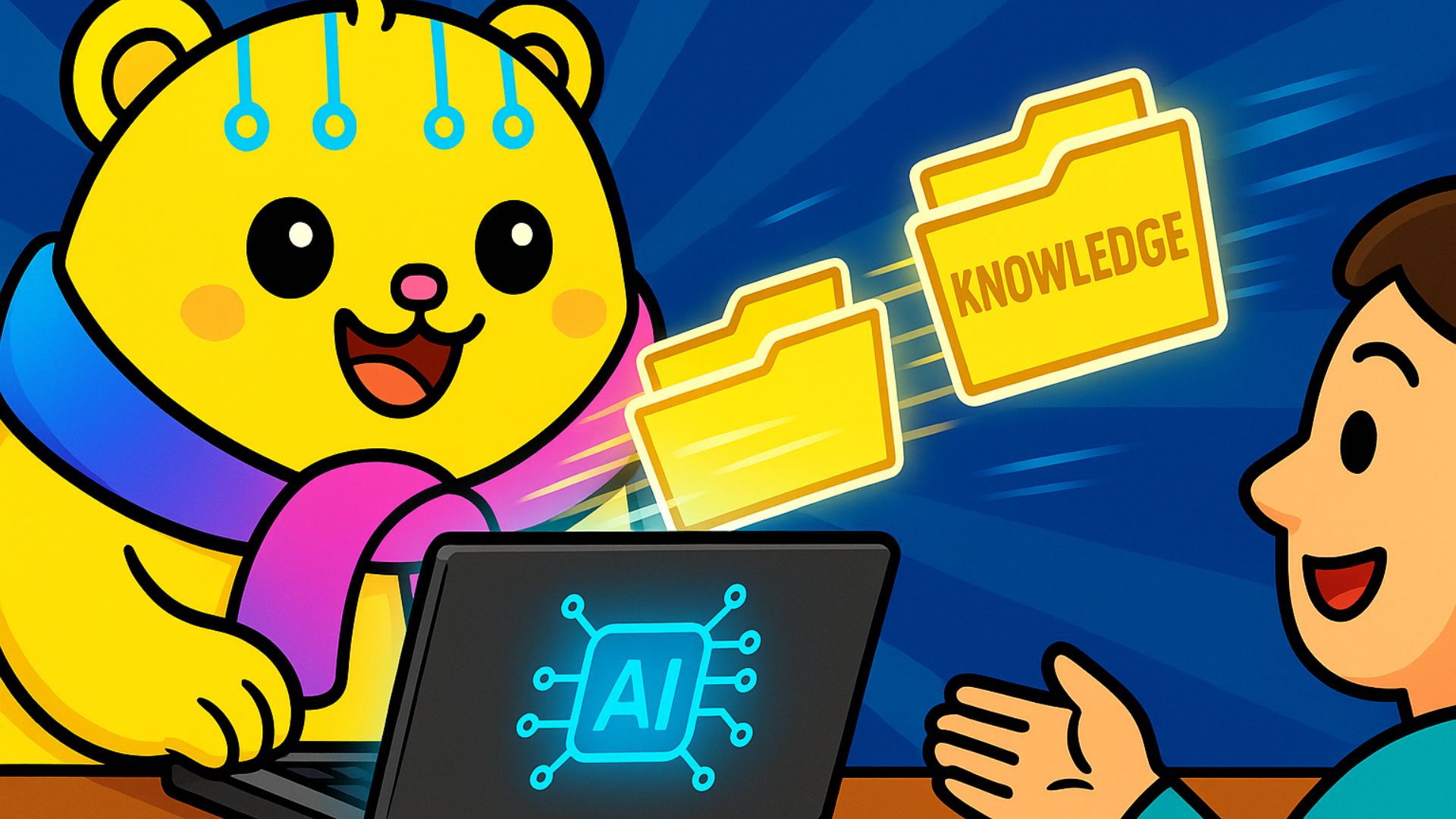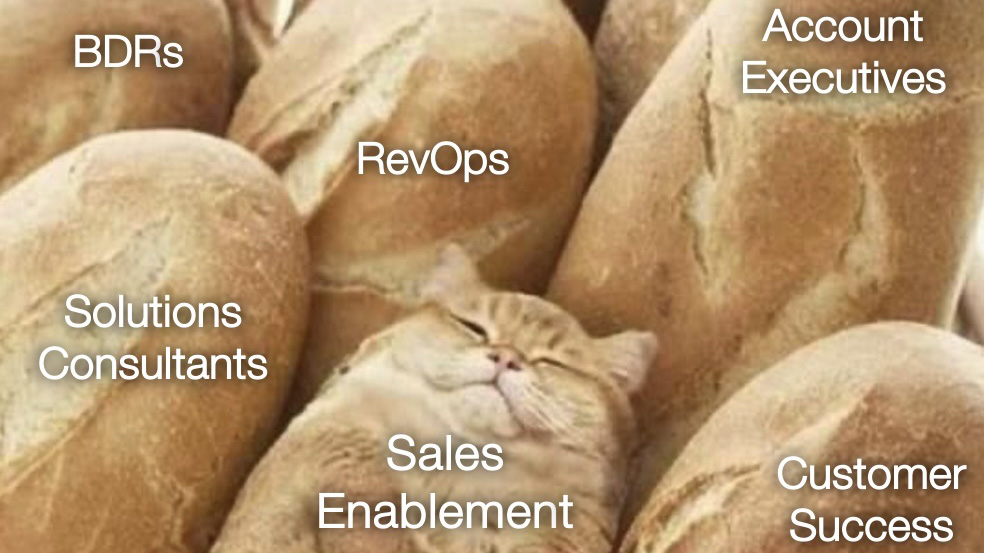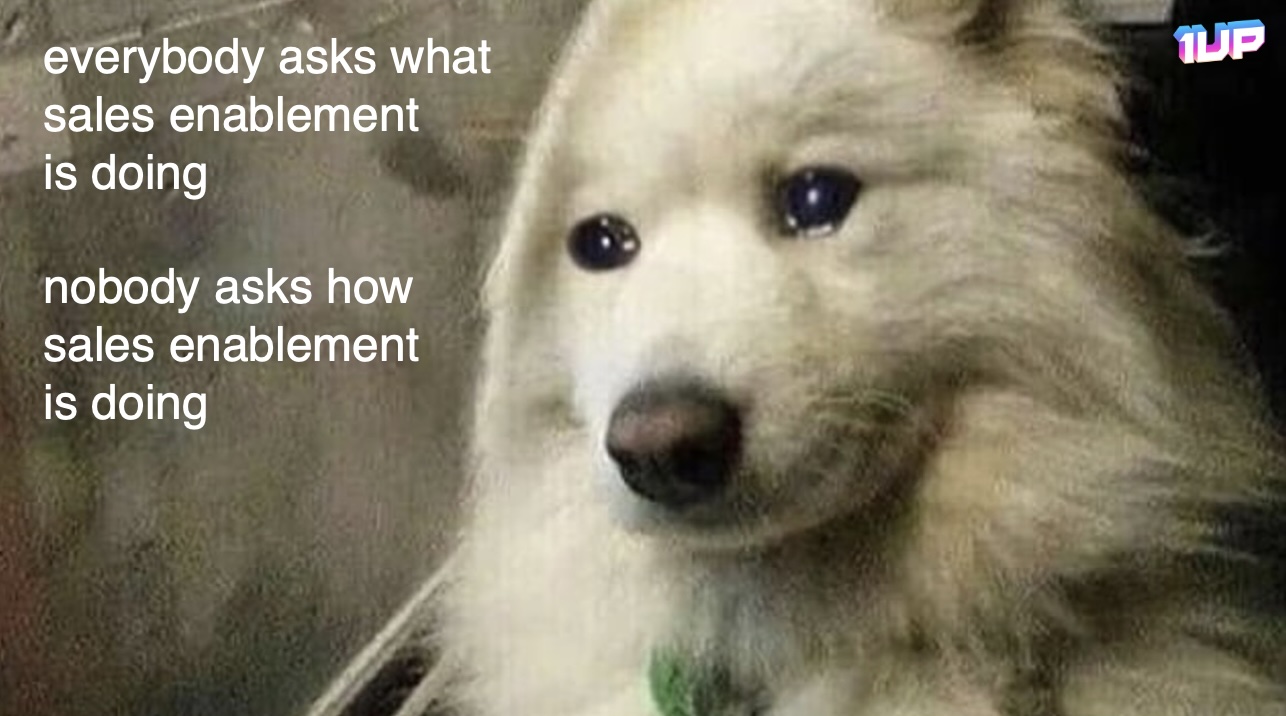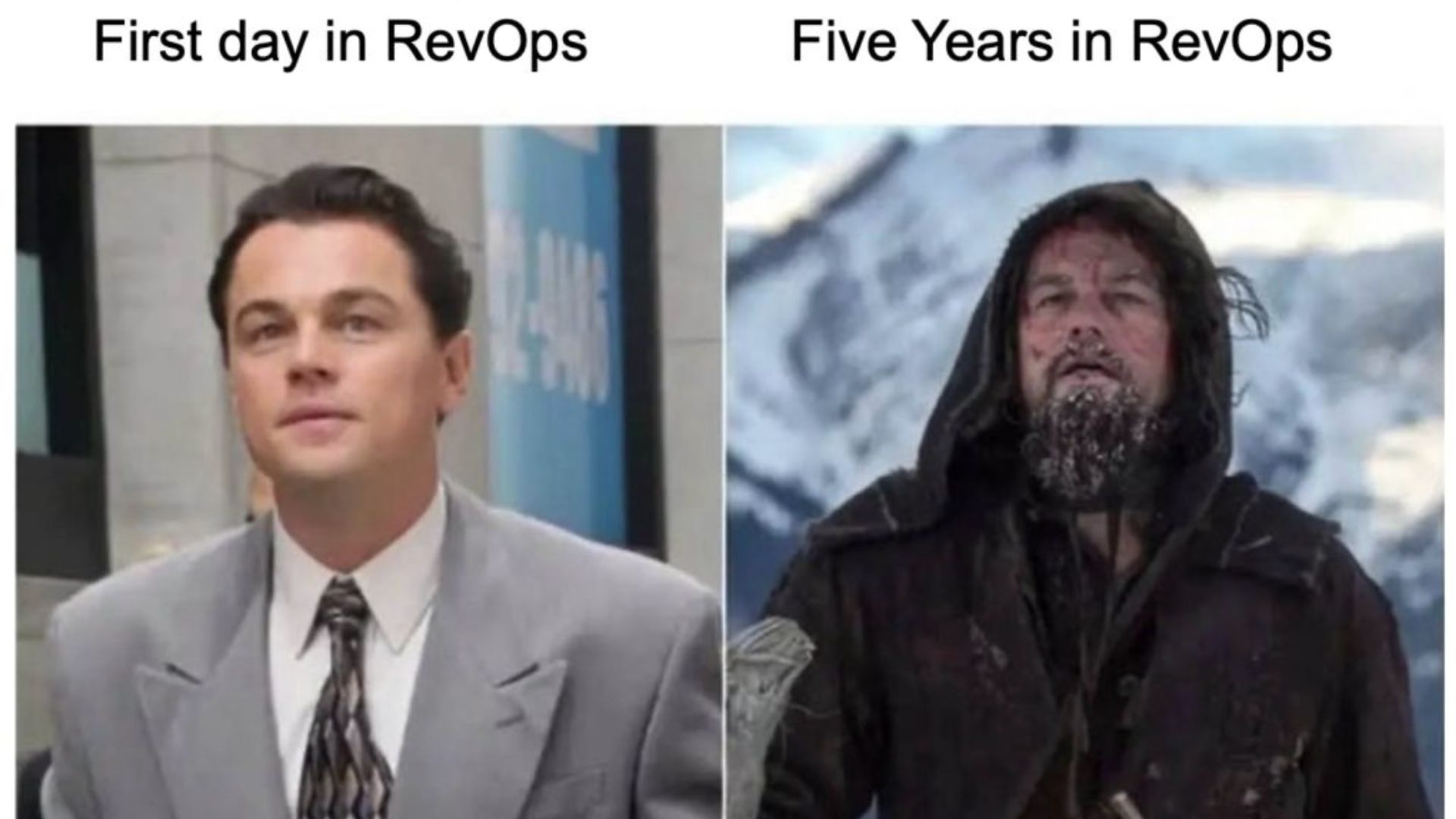Modern buyers come to us prepared. They’ve done their research. They’ve compared vendors. They’ve evaluated alternatives.
And they’ve done it all before they even consider talking to your team.
What this means is that the single most powerful differentiator in a sales process often isn’t the product itself. It’s the content your reps use to engage and educate your buyers at every stage.
But here’s the problem: Far too many companies are still trying to win modern deals with outdated, scattered sales content.
Your reps are wasting their time and yours digging through legacy folders, old decks, and half-finished Google Docs.
Fed up and exhausted, they send “good enough” assets.
Of course, this results in slow responses, missed opportunities, and inconsistent messaging across the team.
Translation: lost deals.
Having a well-defined sales enablement content strategy fixes that.
But that takes time. So if you’re in a hurry, here’s a quick checklist you can follow to pull ahead of your competition.
1. Start by Talking with the Sales Team
You want content that speeds up deals? Start by talking to the people who run those deals.
Gather first-hand feedback from reps.
You can do this by asking:
- Where do conversations tend to stall?
- What content is missing or out of date?
- Which assets resonate, and which ones never get used?
- What do you end up creating from scratch?
Your reps are on the front lines every day. They hear buyer objections in real time. They know when a deck hits and when a case study falls flat. Ignore that input, and you’ll end up creating content that looks good in theory. (Hey, your marketing team might love it.) But it goes unused in the field.
Separate true gaps from distribution issues.
Sometimes the content doesn’t exist. Other times it exists, but your reps can’t find it. In both of these situations, the sales process slows down. But each one requires a different fix.
Clarify which one you’re dealing with before you try to build anything new.
2. Identify Gaps vs. Distribution Issues
Not every request from your sales team requires net-new content. In many cases, the asset already exists; it’s just buried in the wrong place, saved under the wrong name, or locked behind an outdated folder structure. Your first job is to separate true gaps from distribution problems so you can take the right corrective action.
Define What a “Gap” Actually Is
A true content gap means the material doesn’t exist in any format. For example, you’ve never created a field-ready ROI calculator. Maybe there’s no one-page summary of your architecture.
These should be treated as net-new creation projects. Make a short list of clear, high-impact assets that need to be built from scratch.
Audit for Existing but Hidden Assets
In most cases, your team does already has the right materials. They’re just hard to find. So go through your current library for files that answer specific rep requests but are misnamed, outdated, or filed in the wrong location.
Then take the time to repackage or organize them better. Don’t waste time on new content creation here.
Match the Fix to the Problem
Don’t respond to a distribution issue with a net-new asset. If the information already exists, prioritize discoverability (better tagging, cleaner titles, centralization).
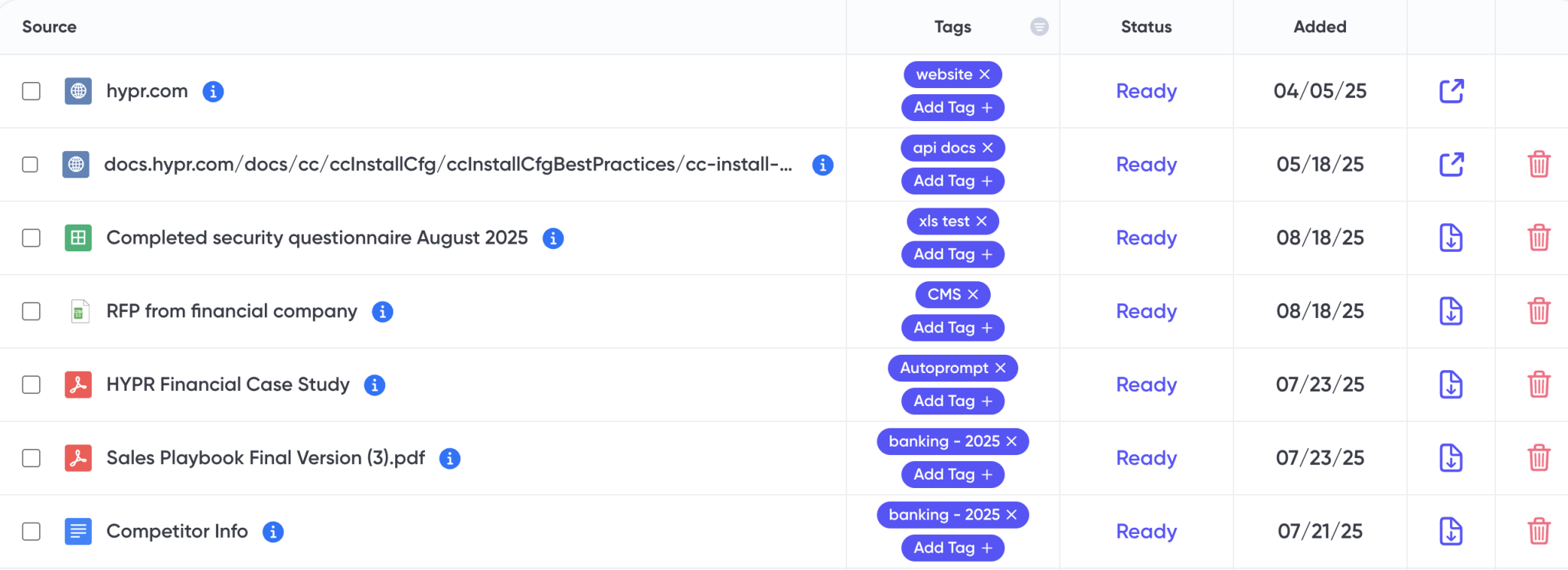
If it doesn’t exist, add it to your content roadmap. Aligning in this way helps you move faster and focus your resources on what actually improves your sales outcomes.
Don’t know where to start? Check out our list of must-have sales enablement assets.
3. Analyze Closed-Lost Deals
Even the best sales teams lose deals. It sucks. But it happens. The key is to turn those losses into insight. So don’t treat them like isolated events. Instead, review them with the goal of understanding what content could have changed the outcome.
Identify Common Friction Points
Look at recent lost opportunities and pinpoint where conversations stalled.
- Were buyers unclear about pricing?
- Did they struggle to understand the ROI?
- Did the rep lack a clear explanation of technical features or integrations?
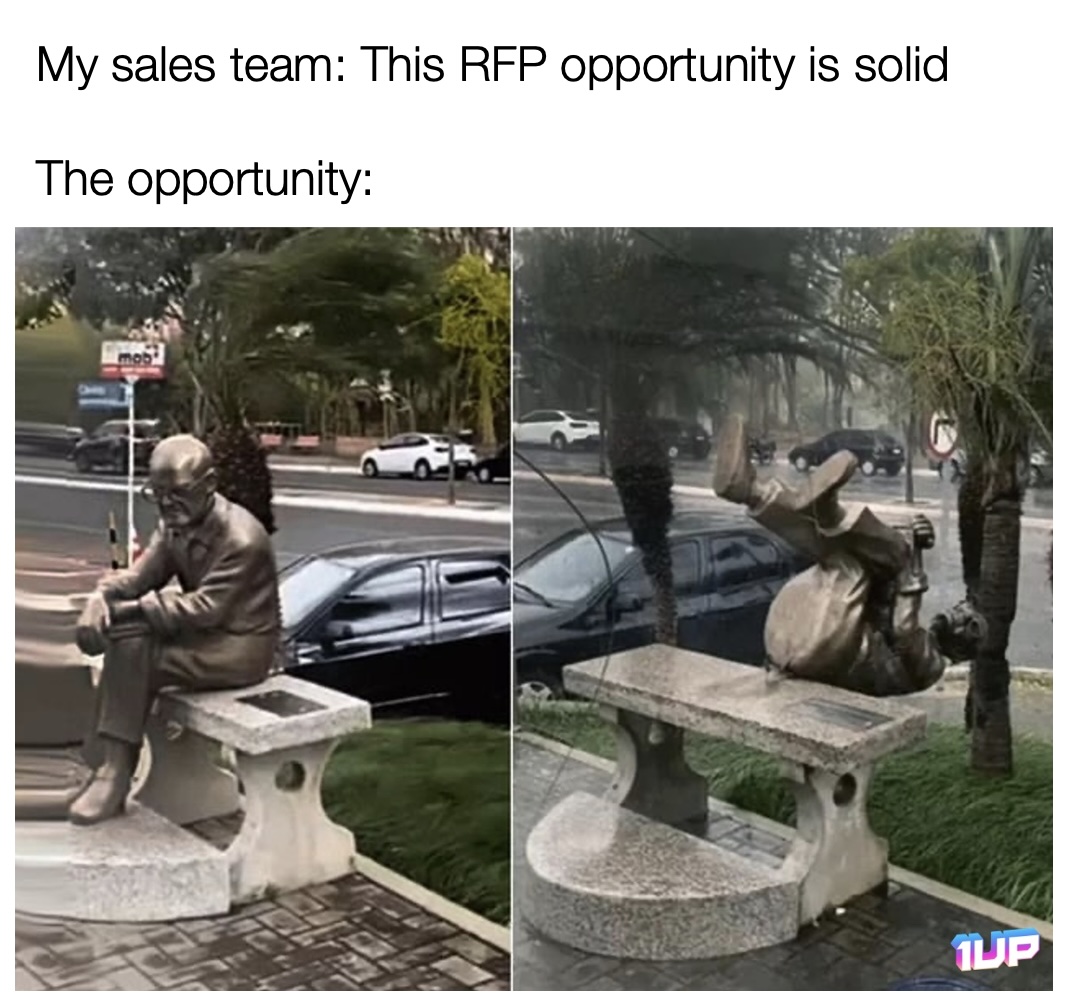
List each point of friction so you can map it back to a specific content need.
Connect Each Issue to a Content Gap
Once friction points are identified, ask yourself: “What asset would have solved this?”
For example:
- Confusion around value → build a pricing & ROI comparison guide
- Late-stage technical questions → create an updated security/architecture doc
- Unclear differentiation vs competitors → update the battle card
Prioritize Gaps by Frequency and Impact
Some gaps come up once in a while. Others show up in almost every lost deal. Focus first on the high-frequency gaps that have the biggest impact on conversion. They’re the fastest way to improve win rates.
4. Analyze Closed-Won Deals
Closed-won analysis is about preserving what works so you can repeat it at scale. Every win leaves clues. Your job is to extract those clues and embed them into your enablement strategy.
Identify High-Value Assets Used
Review recent wins and ask:
- Which content was actually used during the sales cycle?
- Was it a tailored case study?
- A feature comparison table?
- A demo video shared internally by the buyer?
These act as proof that the content was both relevant and persuasive.
Understand How and When Those Assets Were Used
It’s not just which assets were used. It’s how they were used. Map where along the buyer journey your rep introduced each asset. Then look at whether it was used by the buyer to influence internal stakeholders.
Double Down on Proven Assets
Once you identify the most effective content, turn it into repeatable playbooks:
- Turn a successful custom case study into a series of vertical-specific ones
- Re-use the most persuasive slide from a deck in other assets
- Break a demo recording into short, shareable video clips
Not sure where to start? Check out our list of B2B competitive marketing strategies you need to know.
5. Clean Out Old, Unused Content
An extensive library isn’t automatically valuable. Outdated or low-usage content actively slows down your sales team and tears down your credibility in front of your prospects. You don’t want that.

Identify Low-Usage and Outdated Assets
Review the last 6 to 12 months of usage. Then, flag any materials that haven’t been accessed or shared. These assets create unnecessary clutter and distract reps from the content that actually works.
Remove Assets That Undermine Trust
Old pitch decks, outdated messaging, and obsolete case studies may still be circulating internally. When you share those with a prospect, they immediately weaken your position. Getting rid of them will protect your brand and your team’s credibility.
Keep the Library Lean and High-Value
A smaller, more focused library will help your reps find the right asset faster. It also increases the likelihood that those assets are used correctly. Prioritize relevance over volume.
6. Repackage Effective Content
Not every underused asset needs to be scrapped. Many of them are still valuable. They’re just buried in the wrong format or presentation.
Consolidate Redundant Sales Materials
If multiple fact sheets cover overlapping information, combine them into one clear, unified resource. This reduces confusion and makes it easier for your reps to share confident, consistent messaging.
Break Long Assets into Bite-Size Formats
Long PDFs or slide decks may contain useful information, but they can be difficult for prospects to consume. Split them into short, digestible pieces that align with specific stages of the buyer journey.
Refresh Designs and Headlines for Usability
Sometimes content gets ignored simply because it doesn’t look current or isn’t titled clearly. Updating visuals and clarifying headlines can breathe new life into high-value assets and increase adoption.
Remember to balance data with rep feedback.
Don’t get over-excited by high download counts or page views. Usage does not equal effectiveness.
A heavily utilized PDF might be popular simply because it’s at the top of every rep’s sales folder. Meanwhile, a rarely accessed battle card might be the single most effective asset in late-stage conversations – it’s just that no one knows where to find it.
To figure out what’s truly valuable:
- Review usage metrics and
- Ask reps which materials helped them actually win deals
When both data points align, you know you’ve got a high-value asset.
7. Create AI-Ready Content
AI tools are becoming an integral part of modern sales enablement. But they’re only as useful as the content they can read and retrieve.
Know When to Use (and Not Use) AI
Using AI in enablement makes sense if you’re going to automate tactical tasks like generating talk tracks, summarizing win/loss data, or surfacing competitive insights. DO NOT USE AI for high-stakes messaging like positioning, differentiation, or speaking directly to customers.
Why? Because those still require human nuance. Even the best AI won’t understand why your product is better than the competition, and it’s not worth risking a deal over this.

Use AI-Compatible Formats
AI tools struggle with image-only PDFs and overly stylized slide decks. Prioritize clean, structured formats (Google Docs, HTML, Word, Excel) that AI can easily parse and understand.
Make Information Searchable
Structure documents with clear headings, bullet points, and consistent terminology. Creating in this way improves both human readability and AI retrieval accuracy.
| When to Use AI to Automate Content | When to NOT Use AI for Enablement Content |
| To craft talk tracks around strengths and features | To evaluate competitive differentiation |
| To analyze win/loss rates | To create new strategic messaging |
| To automate knowledge management | To create sales playbooks |
| To train sales reps | To coach poor performers |
| To find responses to customer objections | To speak directly to customers |
8. Keep Content Fresh and Centralized
Even the best content loses value if it’s scattered or outdated. A centralized, automated sales enablement platform like 1up will ensure your reps always pull from a single source of truth.
Centralize Content, Maintain Updates and Version Control
Avoid storing documents in personal drives, email threads, or Slack attachments. House everything in one cloud platform with clear version control so reps always access the latest version.
Old versions should be archived or removed. New versions should be clearly dated and tagged. That will help you make sure there’s no confusion about which asset to use.
9. Integrate AI with Company Chat Tools
Even the most valuable content won’t drive impact if it’s buried in a platform your reps rarely visit. To make enablement content truly actionable, you’ll want to embed it directly into the tools your team already uses every day.
Drive Enablement Content in Slack, MS Teams, and Google Chat
Reps shouldn’t have to leave a live conversation or dig through multiple folders to find the right asset. Connect your content library directly to Slack, Microsoft Teams, Google Chat, or your CRM so they can access relevant content with a single click or slash command. 1up makes this process seamless.

Embed Content Where Work Happens
Identify the most utilized tools in your sales stack and integrate the library into those workflows. For example, add quick-access links in opportunity records inside the CRM, or pin the most popular assets in team Slack channels.
Serve Contextual Content in Real Time
When possible, embed intelligent search or recommendation features that surface content based on the stage of the deal or the specific questions a rep receives. This will help you make sure the right asset shows up at exactly the right moment. And your rep won’t even have to think about it.
10. Build the Core Content Types
Obviously, not all formats are created equal. Some content types will consistently move your deals forward. Focus on these high-value formats to drive more deals:
| Content Type | Why It Matters |
| Case Studies | Build credibility with real-world proof, especially when tailored by industry |
| Competitive Battle Cards | Help reps respond to objections and position your offering in real time |
| “Why Us” Narratives | Clearly articulate why prospects should choose, and stay with, your solution |
| Security & Compliance Docs | Reduce last-minute objections and satisfy procurement / legal requirements |
| Demo Videos | Let buyers see the product in action without having to schedule a live demo. |
11. Gather Continuous Real-Time Feedback
Sales enablement is not one-directional. It’s a living, responsive process. Creating a feedback loop that functions in real time:
- Allows your reps to upvote/downvote content directly in the portal.
- Let your reps comment or suggest edits to existing assets.
- Invites top performers to co-create new materials based on their experience in the field.

When you bring your sales reps into the content creation process, they’re far more likely to use what gets built.
12. Phase Out Low-Value Content
Some formats no longer align with how today’s buyers consume information. Indeed, they typically do more harm than good.
Long, text-heavy one-pagers
These extensive, complicated docs look impressive to your internal team. But your buyers rarely read them, and your sales team knows it. They’re hard to update, and they can trigger email security filters.
They’re a pain in the a$$. Let them go.
Get Rid of Low-Value High Friction Content
Yes, the gated white paper needs to go.
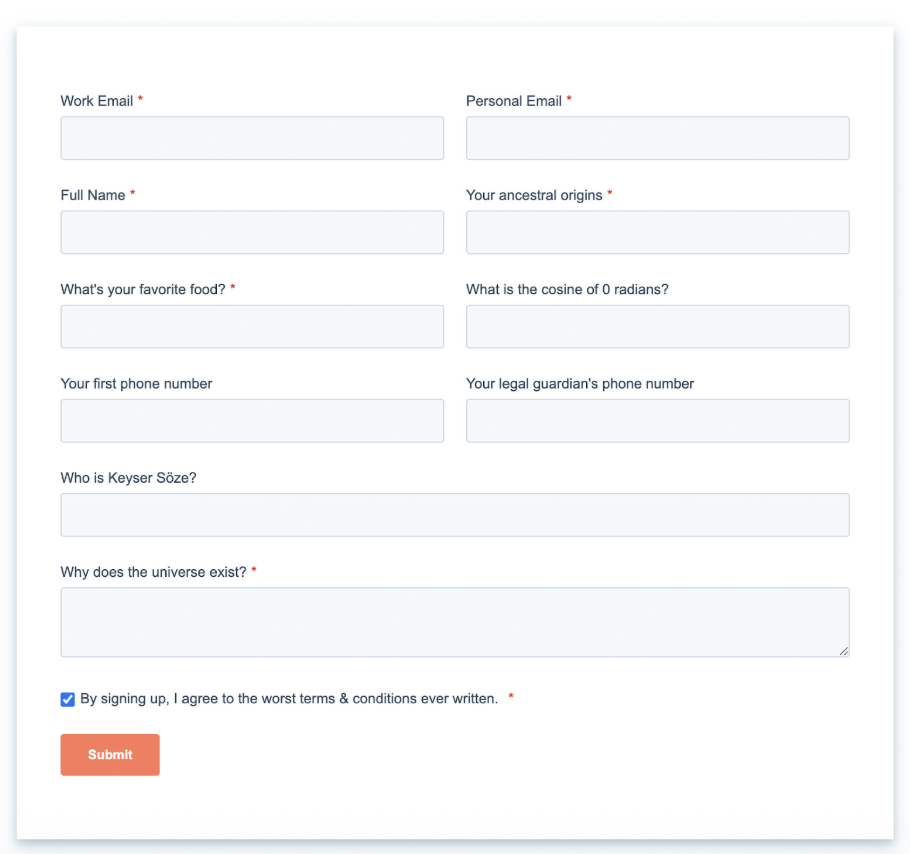
Lead capture forms and gated PDFs are great for marketing campaigns. Sadly, they’re terrible for enablement. Your reps need fast, frictionless ways to share content.
If you’ve got great content that requires a prospect to fill out a form first, it’s slowing down the deal.
Effective Enablement = Empowered Sellers
A modern enablement content strategy isn’t about having the most content. It’s about having the right content. Then, it’s about structuring that content for the way people actually sell and buy.
Make sure you:
- Listen to your front-line sellers,
- Learn from past deals,
- Clean and update your library,
- Prioritize AI-ready, high-value formats, and
- Continuously gather real-world feedback,
This approach to sales enablement content creates a living system that empowers your reps. Now they can tackle real buyer objections, share relevant proof, and ultimately win more deals.
Now and well into the future, the winners won’t be the teams with perfect brand templates. They’ll be the ones enabling their sales teams with clear, accessible content used at exactly the right moment.
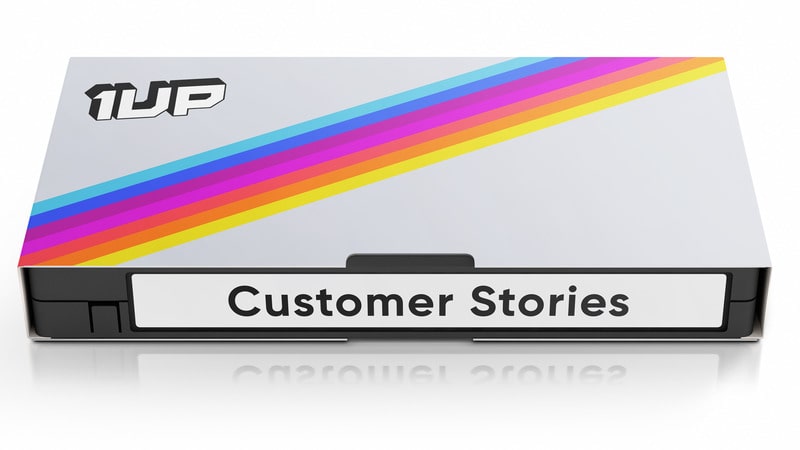

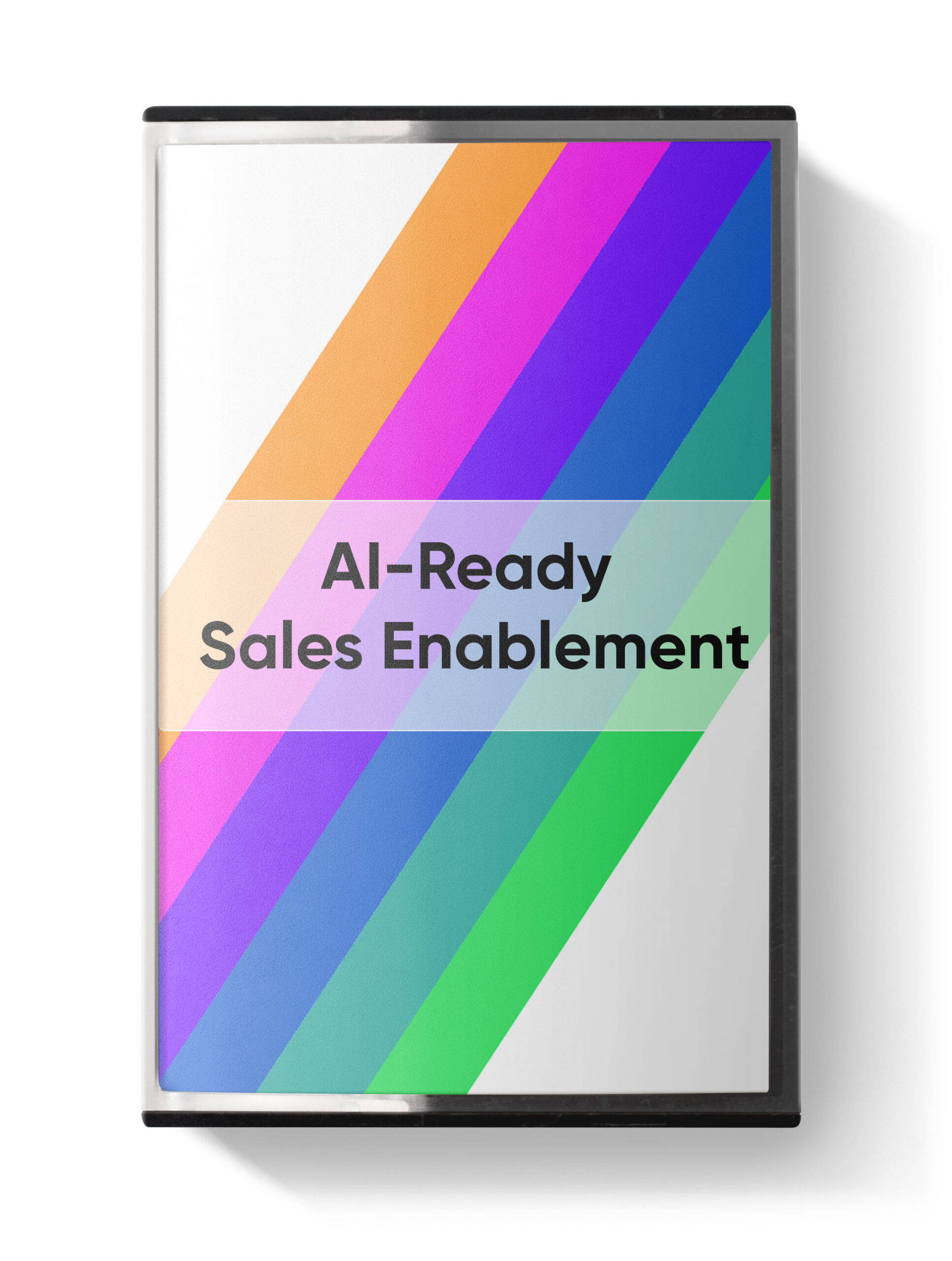
 Instagram
Instagram 


